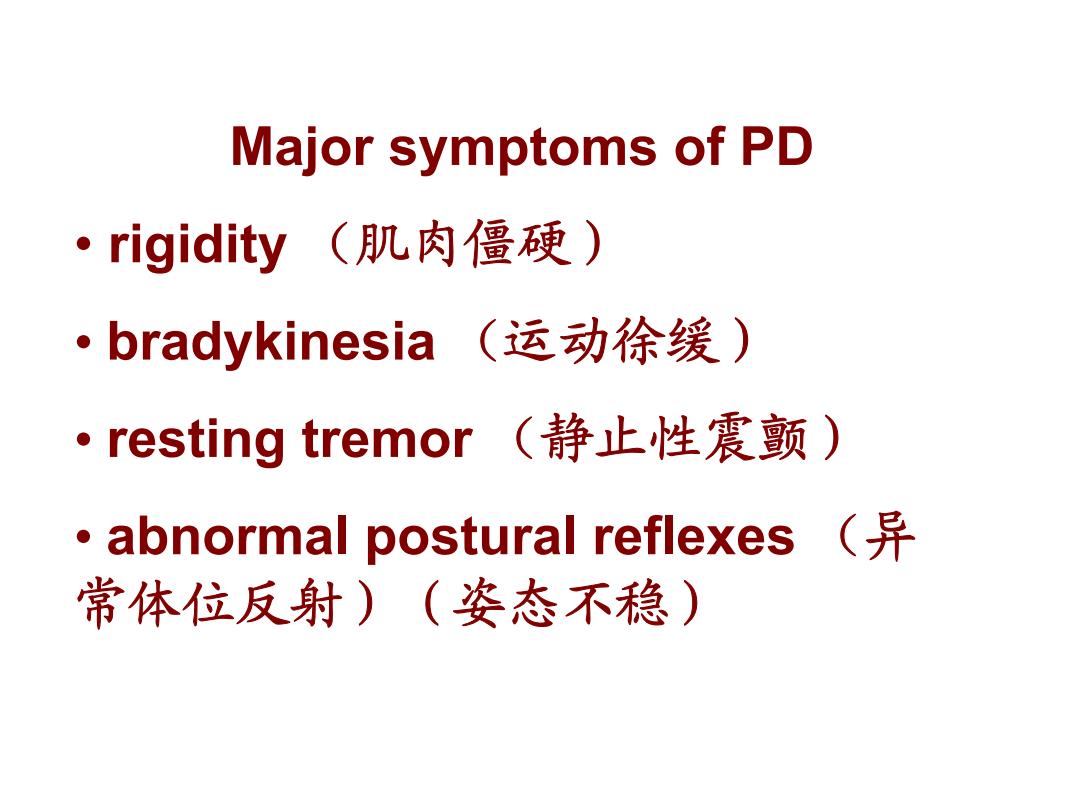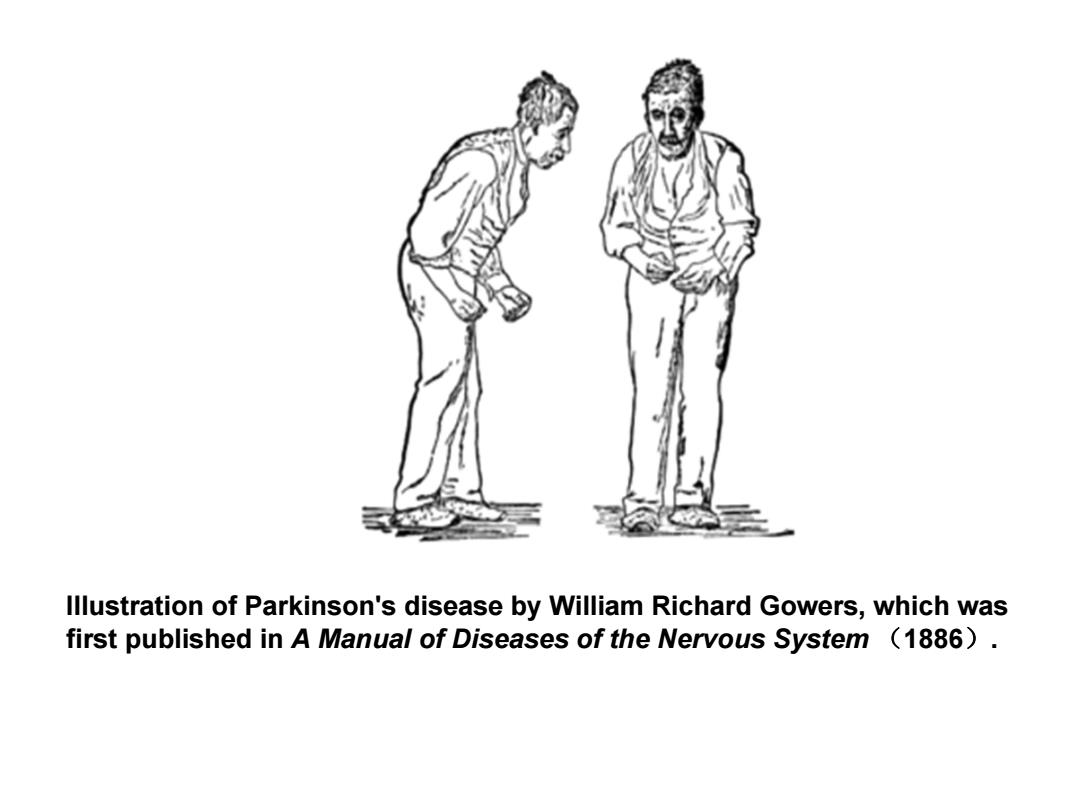
What is Parkinson's disease (PD)? A progressive nervous disease occurring most often after the age of 50, associated with the destruction of brain cells that produce dopamine,and characterized by muscular tremor, slowing of movement,partial facial paralysis,peculiarity of gait(步态)t and posture,and weakness
What is Parkinson’s disease (PD)? A progressive nervous disease occurring most often after the age of 50, associated with the destruction of brain cells that produce dopamine, and characterized by muscular tremor, slowing of movement, partial facial paralysis, peculiarity of gait (步态 ) and posture, and weakness

Ventricles Thalamus Frontal cortex Substantia Nigra Striatum Hypothalamus serolonin pathwoy dopamine pathway (nigrostriatial) Brainstem dopamine pathway (mesolimbic) Which pathway?Substantia nigra-striatum pathway
Which pathway? Substantia nigra-striatum pathway

Major symptoms of PD ·rigidity(肌肉僵硬) ·bradykinesia(运动徐缓) ·resting tremor(静止性震颤) ·abnormal postural reflexes(异 常体位反射)(姿态不稳)
Major symptoms of PD • rigidity (肌肉僵硬) • bradykinesia (运动徐缓) • resting tremor (静止性震颤) • abnormal postural reflexes ( 异 常体位反射)(姿态不稳)

Illustration of Parkinson's disease by William Richard Gowers,which was first published in A Manual of Diseases of the Nervous System (1886)
Illustration of Parkinson's disease by William Richard Gowers, which was first published in A Manual of Diseases of the Nervous System (1886 )

A man with Parkinson's disease displaying a flexed walking posture pictured in 1892.Photo appeared in Nouvelle Iconographie de la Salpetriere,vol.5
A man with Parkinson's disease displaying a flexed walking posture pictured in 1892. Photo appeared in Nouvelle Iconographie de la Salpètrière, vol. 5